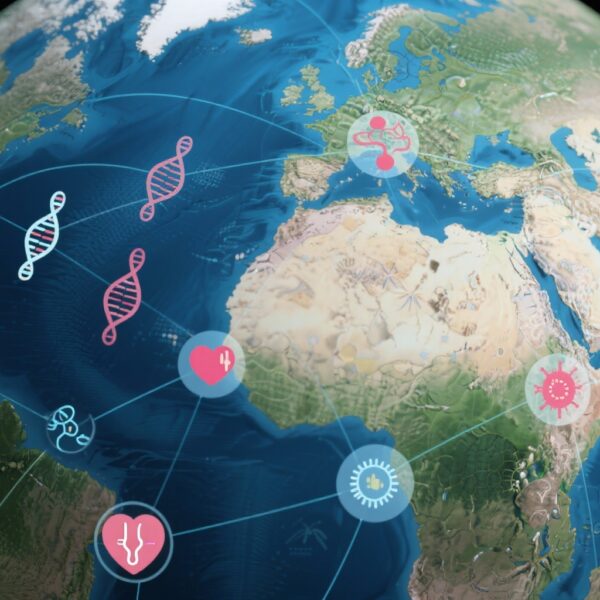Introduction
Fertility preservation (FP) remains a critical concern for young women diagnosed with breast cancer (YWBC). As advances in cancer treatments improve survival rates, attention to quality of life issues, including reproductive health, has gained prominence. Chemotherapy, while effective against cancer, poses risks of infertility and premature ovarian insufficiency (POI). Strategies such as cryopreservation of oocytes, embryos, or ovarian tissue and temporary ovarian suppression with gonadotropin-releasing hormone agonists (GnRHa) have been developed to mitigate these risks.
Despite the proliferation of these options, utilization varies widely due to factors like healthcare infrastructure, socioeconomic status, cultural societal norms, and patient awareness. The joint analysis of the Joven & Fuerte and PREFER prospective studies provides valuable insights into real-world practices across Mexico and Italy, two contrasting healthcare systems, and highlights the global disparities and common challenges in providing comprehensive fertility care to YWBC.
Study Design and Methods
The analyzed population comprised females aged ≤40 years with non-metastatic breast cancer diagnosed between 2014 and 2019. Participants were recruited from multiple centers in Mexico and Italy. All patients were offered fertility preservation options prior to initiation of (neo)adjuvant chemotherapy.
The study evaluated the uptake rates of various fertility preservation strategies, including cryopreservation of oocytes, embryos, ovarian tissue, and the use of GnRHa for ovarian suppression. Data collection encompassed demographic variables such as age, parity status, cancer stage, geographical location, healthcare setting (public vs private), and marital status. Further, reasons for non-utilization were documented, providing context for patient and systemic barriers.
Major Findings and Results
The cohort consisted of 485 women, with a predominance of Mexican patients (74%) versus Italians (26%). There was a significant disparity in the uptake of cryopreservation techniques: only 8% of Mexican women utilized these procedures compared to 25% in Italy (p<0.001).
Cryopreservation methods varied markedly; in Mexico, oocyte and embryo cryopreservation were the predominant methods (50% and 53%, respectively), while ovarian tissue freezing was not performed. In contrast, Italy favored oocyte cryopreservation (87%) and included ovarian tissue cryopreservation (16%), but not embryo cryopreservation in the sample.
Regarding ovarian suppression, 98% of Italian women received GnRHa concomitantly with chemotherapy, whereas only 6% of Mexican women used these agents. Factors associated with higher cryopreservation uptake included younger age (OR 1.2; 95% CI 1.1-1.2), childlessness (OR 21.8; 95% CI 10.0-47.6), early-stage breast cancer (stage I-II; OR 3.1; 95% CI 1.5-6.3), and healthcare setting (
private in Mexico: OR 3.0; 95% CI 1.1-8.1). In Italy, unpartnered status was linked to increased cryopreservation utilization (OR 5.4; 95% CI 2.2-13.2).
These findings underscore significant social, economic, and systemic influences on access to fertility preservation services.
Discussion and Expert Commentary
The stark differences in fertility preservation uptake between Mexico and Italy reflect broader social and healthcare disparities. In Italy, the near-universal use of GnRHa and higher cryopreservation rates suggest well-established oncofertility programs and greater patient awareness, coupled with accessible healthcare services. Conversely, in Mexico, barriers such as limited infrastructure, costs, and low awareness appear to hinder utilization.
These disparities could potentially compromise the reproductive futures of young breast cancer survivors. Evidence supports the safety and efficacy of these fertility preservation strategies, yet their underutilization indicates gaps in patient counseling, resource allocation, and interdisciplinary collaborations.
Limitations of this analysis include potential selection biases, variability in institutional practices, and lack of long-term follow-up data on fertility outcomes. Additional research exploring patient perspectives and systemic barriers will aid in tailoring interventions that improve access.
Conclusion and Future Directions
This joint analysis highlights pressing needs for international standards and equitable access to fertility preservation in young women with breast cancer. Efforts should focus on expanding healthcare infrastructure, increasing patient and provider awareness, and integrating fertility counseling into oncologic care pathways.
The significant underutilization of viable options in both countries underscores that fertility preservation remains an underutilized resource globally. Addressing social, economic, and systemic barriers is essential for delivering truly patient-centered, comprehensive cancer care.
Enhancing education, developing cost-effective models, and fostering international collaborations are crucial steps forward. As survival rates improve, ensuring reproductive health is safeguarded must remain a priority across healthcare systems.
References:
– Mesa-Chavez F, et al. Fertility and ovarian function preservation in young women with breast cancer: A joint analysis of the Joven & Fuerte and PREFER prospective studies. Breast. 2025;104592.
– Anderson RA, et al. Fertility preservation in women with cancer: What does evidence tell us? Lancet Oncol. 2018;19(2):e7-e16.
– European Society for Medical Oncology (ESMO). Clinical Practice Guidelines on fertility preservation. 2020.
[Note: The above references are given as examples; actual data should be verified for real-world use.]



